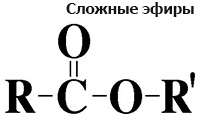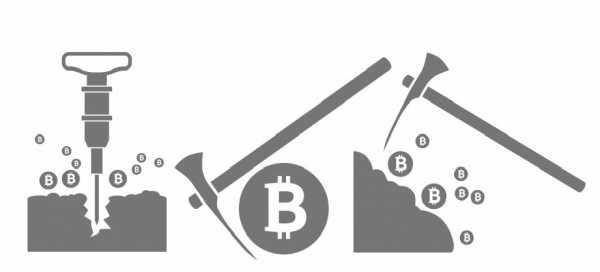Эфир - мифология или основа научных знаний? Эфир мифология
мифология или основа научных знаний?
Понятие "эфир" мифология древних народов определяет как некую божественную субстанцию. Одно из древнейших философских понятий, оно перекочевало из мифов в труды ученых и мыслителей.
Мифологическое описание
Олицетворение темноты – богиня Никта и ее брат Эреб, бог вечного Мрака, - родились из Хаоса. От их союза появился вечный Свет – Эфир, светлый День – Гемера. И стала ночь сменять день, а темнота – свет. Теперь живет Никта в самой бездне Тартара. Каждый день около медной двери, отделяющей царство мертвых от нашего мира, встречается богиня тьмы с Гемерой, и по очереди обходят они землю.
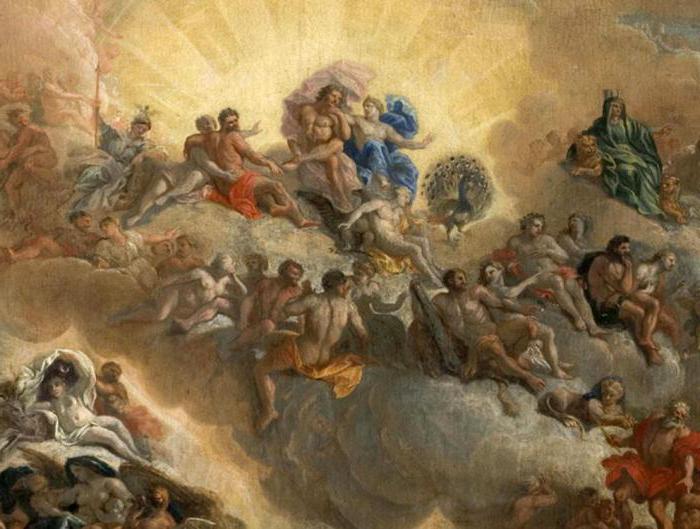 Так описывает эфир мифология Древней Греции. Это самая популярная версия, изложенная в так называемой «Мифологической библиотеке» Аполлодора. Поэма «Титаномахия», авторство которой приписывается фракийскому слепому певцу Фамирису, повествует о том, что Эфир и Гемера породили Гею, Урана, Тартара и Понта. Латинское изложение древнегреческих мифов Гигина рассказывает о том, что Эфир был порождением Хаоса и мглы. Некоторые древние авторы называют Эфира отцом Зевса или Урана. Возможно, это второе имя Урана.
Так описывает эфир мифология Древней Греции. Это самая популярная версия, изложенная в так называемой «Мифологической библиотеке» Аполлодора. Поэма «Титаномахия», авторство которой приписывается фракийскому слепому певцу Фамирису, повествует о том, что Эфир и Гемера породили Гею, Урана, Тартара и Понта. Латинское изложение древнегреческих мифов Гигина рассказывает о том, что Эфир был порождением Хаоса и мглы. Некоторые древние авторы называют Эфира отцом Зевса или Урана. Возможно, это второе имя Урана.
Орфей посвятил пятый стих божеству Света, в котором оно предстает в другой ипостаси. Объясняет, что такое эфир, мифология так: сверхмирное место, невидимая и неосязаемая сущность, которая ограничивает вверху все постижимое и непостижимое в мироздании. Возвышается над видимым миром всего живого и понятного человеку.
Говоря более простым языком - это верхний слой воздуха, место, где живут древнегреческие боги, – вершина Олимпа.
Эфир – основа мироздания
Неиссякаемый источник энергии для всего живого – так определяли лучшие умы древности эфир. Греческая мифология стала основой научных трудов.
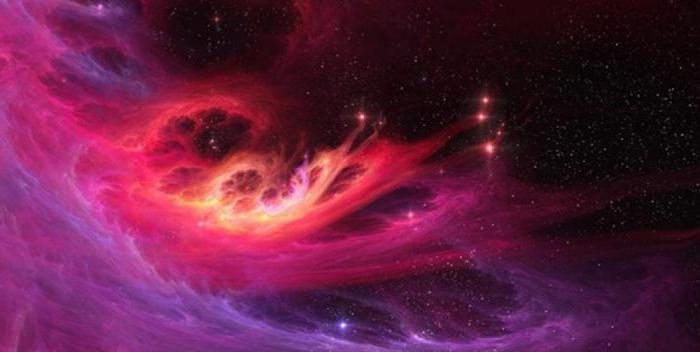 По мнению Платона, величайшего мыслителя Эллады, из этой субстанции был создан весь мир. Аристотель вводит понятие "эфир" как пятую стихию помимо огня, земли, воды и воздуха. Он считал его неким бессмертным телом божественного происхождения. Эфир стал краеугольным камнем его космологической теории. Считалось, что это вещество обладало особым свойством: оно могло двигаться только по кругу, в отличие от других четырех стихий, которые могли совершать прямолинейное движение. Гесиод в своей «Теогонии» также называет эфир одной из составляющих всего материального в окружающем мире.
По мнению Платона, величайшего мыслителя Эллады, из этой субстанции был создан весь мир. Аристотель вводит понятие "эфир" как пятую стихию помимо огня, земли, воды и воздуха. Он считал его неким бессмертным телом божественного происхождения. Эфир стал краеугольным камнем его космологической теории. Считалось, что это вещество обладало особым свойством: оно могло двигаться только по кругу, в отличие от других четырех стихий, которые могли совершать прямолинейное движение. Гесиод в своей «Теогонии» также называет эфир одной из составляющих всего материального в окружающем мире.
Многие ученые и философы древности, такие как Демокрит, Эпикур, Пифагор, использовали определение «эфир» в своих рассуждениях об устройстве мироздания. Пифагорейцы считали его не только одной из стихий, но и частью души человека.
«Эфир» в древнем Риме
Выдающийся древнеримский поэт и философ Лукреций давал более определенное объяснение понятию «эфир». Ученый считал, что это материальная субстанция, только более тонкая, чем привычные для человеческого глаза материи. Движение планет, Солнца и Земли происходит благодаря постоянному перемещению эфира в пространстве. В состав человеческой души входит как один из вещественных компонентов, он легче воздуха и практически неосязаем.
Древнеиндийские представления
Интересно то, что схожие суждения есть и в древнеиндийских сказаниях. Эфир мифология Индии именует «акашей», но суть этого вещества остается прежней: некая субстанция, которая является началом всего живого. Древние упоминания «акаши» говорят лишь об одном его проявлении - первичном звуке, который не воспринимается человеческим слухом и находится в сфере тонких вибраций. Акаша – первичное нематериальное вещество, которое не имеет формы, но дает основу мирозданию и всему многообразию вещей.
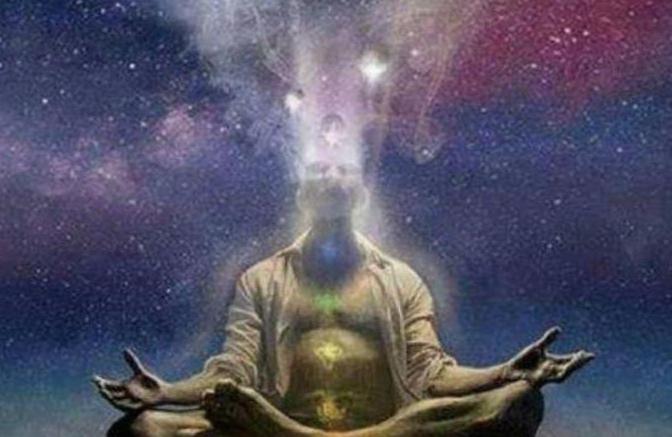 Считается, что именно индийская теория об «акаше» и заложила основу такого понятия, как «эфир» в древнегреческой философии и науке. Поражает воображение то, что много столетий назад мыслители древности благодаря наитию и чутью определили свойства неиссякаемого источника энергии, который смог обнаружить только в 20 веке сербский физик Никола Тесла.
Считается, что именно индийская теория об «акаше» и заложила основу такого понятия, как «эфир» в древнегреческой философии и науке. Поражает воображение то, что много столетий назад мыслители древности благодаря наитию и чутью определили свойства неиссякаемого источника энергии, который смог обнаружить только в 20 веке сербский физик Никола Тесла.
fb.ru
Эфир (мифология)
По наиболее популярной версии, бог Эфир был сыном Эреба (подземного Мрака) и Нюкты-Ночи, братом Гемеры (Дня).
По версии поэмы «Титаномахия», Эфир и Гемера были родителями Геи-Земли, Урана-Неба, Понта (Моря), Океана, Тартара. В изложении Гигина, Эфир родился от Хаоса и Мглы. По другой версии, Эфир — отец Зевса. Именуется отцом ветров.
Примечания
- ↑ Любкер Ф. Реальный словарь классических древностей. М., 2001. В 3-х т. Т. 1. С. 50
- ↑ Гесиод. Теогония 124
- ↑ Титаномахия, фр. 2 Ивлин-Уайт
- ↑ Гигин. Мифы. Введение 1
- ↑ Цицерон. О природе богов III стр. 53
- ↑ Гомер. Одиссея V стр. 296
| География · Хронология · Флора · Фауна · Лошади · Катастеризм · Генеалогические связи | ||||||||||||
| ||||||||||||
| ||||||||||||
| ||||||||||||
| ||||||||||||
| ||||||||||||
| ||||||||||||
| Категории: Религия и мифология · Боги и богини · Герои и героини · Мифические народы · Мифические существаПортал | ||||||||||||
Эфир (мифология) Информация о
Эфир (мифология)Эфир (мифология)Эфир (мифология) Информация Видео
Эфир (мифология) что, Эфир (мифология) кто, Эфир (мифология) объяснение
There are excerpts from wikipedia on this article and video
www.turkaramamotoru.com
Эфир (мифология) — Википедия (с комментариями)
Материал из Википедии — свободной энциклопедии
У этого термина существуют и другие значения, см. Эфир.| Файл:Aether in battle with a lion-headed Giant.jpg | |
| Мифология: | Древнегреческая мифология |
| Период жизни: | бессмертен |
| В иных культурах: | Ошибка Lua в Модуль:Wikidata на строке 170: attempt to index field 'wikibase' (a nil value). |
| Пол: | Ошибка Lua в Модуль:Wikidata на строке 170: attempt to index field 'wikibase' (a nil value). |
| Занятие: | бог облаков и горного мира |
| Сфера влияния: | Ошибка Lua в Модуль:Wikidata на строке 170: attempt to index field 'wikibase' (a nil value). |
| Отец: | Эреб Мрак Бездны |
| Мать: | Нюкта Тьма Ночная |
| Братья: | Ошибка Lua в Модуль:Wikidata на строке 170: attempt to index field 'wikibase' (a nil value). |
| Сёстры: | Ошибка Lua в Модуль:Wikidata на строке 170: attempt to index field 'wikibase' (a nil value). |
| Супруг(а): | Ошибка Lua в Модуль:Wikidata на строке 170: attempt to index field 'wikibase' (a nil value). |
| Дети: | Уран, Гея, Тартар, Таласса. |
| Связанные понятия: | второе поколение хтонических божеств эллинов |
| Ошибка Lua в Модуль:Wikidata на строке 170: attempt to index field 'wikibase' (a nil value).? | |
Эфи́р (др.-греч. Αἰθήρ — горный воздух) в древнегреческой мифологии[1] — верхний слой воздуха (неба), местопребывание богов, а также его олицетворение (персонификация) — божество Эфир.
Эфир как часть мира — верхний (горный), наиболее лёгкий (тонкий, разрежённый), прозрачный и лучезарный слой воздуха, верхний слой неба, которым дышат и в котором живут боги. Эфир достигает вершины Олимпа, где находятся олимпийские боги.
По наиболее популярной версии, бог Эфир был сыном Эреба (подземного Мрака) и Никты-Ночи, братом Гемеры (Дня)[2].
По версии поэмы «Титаномахия», Эфир и Гемера были родителями Геи-Земли, Урана-Неба[3], Понта (Моря), Океана, Тартара. В изложении Гигина, Эфир родился от Хаоса и Мглы[4]. По другой версии, Эфир — отец Зевса[5]. Именуется отцом ветров[6].
Напишите отзыв о статье "Эфир (мифология)"
Примечания
Отрывок, характеризующий Эфир (мифология)
– Что вам, маленькие? Что вы здесь потеряли?.. – отрешённо спросил «отшельник». – Почему ты здесь один сидишь, и никого с тобой нет? – участливо спросила Стелла. – И место такое жуткое... Было видно, что человек совсем не хотел общаться, но тёплый Стеллин голосок не оставлял ему никакого выхода – приходилось отвечать... – Мне никто не нужен уже много, много лет. В этом нет никакого смысла, – прожурчал его грустный, ласковый голос. – А что же тогда ты делаешь тут один? – не унималась малышка, и я испугалась, что мы покажемся ему слишком навязчивыми, и он просто попросит нас оставить его в покое. Но у Стеллы был настоящий талант разговорить любого, даже самого молчаливого человека... Поэтому, забавно наклонив на бок свою милую рыжую головку, и, явно не собираясь сдаваться, она продолжала: – А почему тебе не нужен никто? Разве такое бывает? – Ещё как бывает, маленькая... – тяжко вздохнул человек. – Ещё как бывает... Я всю свою жизнь даром прожил – кто же мне теперь нужен?.. Тут я кое-что потихонечку начала понимать... И собравшись, осторожно спросила: – Вам открылось всё, когда вы пришли сюда, так ведь? Человек удивлённо вскинулся и, вперив в меня свой, теперь уже насквозь пронизывающий, взгляд, резко спросил: – Что ты об этом знаешь, маленькая?.. Что ты можешь об этом знать?... – он ещё больше ссутулился, как будто тяжесть, навалившаяся на него, была неподъёмной. – Я всю жизнь бился о непонятное, всю жизнь искал ответ... и не нашёл. А когда пришёл сюда, всё оказалось так просто!.. Вот и ушла даром вся моя жизнь... – Ну, тогда всё прекрасно, если ты уже всё узнал!.. А теперь можешь что-то другое снова искать – здесь тоже полно непонятного! – «успокоила» незнакомца обрадованная Стелла. – А как тебя зовут, грустный человек? – Фабий, милая. А ты знаешь девочку, что тебе дала этот кристалл? Мы со Стеллой от неожиданности дружно подпрыгнули и, теперь уже вместе, «мёртвой хваткой» вцепились в бедного Фабия... – Ой, пожалуйста, расскажите нам кто она!!! – тут же запищала Стелла. – Нам обязательно нужно это знать! Ну, совсем, совсем обязательно! У нас такое случилось!!! Такое случилось!.. И мы теперь абсолютно не знаем, что с этим делать... – слова летели из её уст пулемётной очередью и невозможно было хоть на минуту её остановить, пока сама, полностью запыхавшись, не остановилась.Эфир (мифология) - WikiVisually
1. Древнегреческая мифология – It was a part of the religion in ancient Greece. Greek mythology is explicitly embodied in a collection of narratives. Greek myth attempts to explain the origins of the world, and details the lives and adventures of a variety of gods, goddesses, heroes, heroines. These accounts initially were disseminated in a tradition, today the Greek myths are known primarily from ancient Greek literature. The oldest known Greek literary sources, Homers epic poems Iliad and Odyssey, focus on the Trojan War, archaeological findings provide a principal source of detail about Greek mythology, with gods and heroes featured prominently in the decoration of many artifacts. Geometric designs on pottery of the eighth century BC depict scenes from the Trojan cycle as well as the adventures of Heracles, in the succeeding Archaic, Classical, and Hellenistic periods, Homeric and various other mythological scenes appear, supplementing the existing literary evidence. Greek mythology has had an influence on the culture, arts. Poets and artists from ancient times to the present have derived inspiration from Greek mythology and have discovered contemporary significance and relevance in the themes, Greek mythology is known today primarily from Greek literature and representations on visual media dating from the Geometric period from c. Mythical narration plays an important role in every genre of Greek literature. Nevertheless, the only general mythographical handbook to survive from Greek antiquity was the Library of Pseudo-Apollodorus and this work attempts to reconcile the contradictory tales of the poets and provides a grand summary of traditional Greek mythology and heroic legends. Apollodorus of Athens lived from c, 180–125 BC and wrote on many of these topics. His writings may have formed the basis for the collection, however the Library discusses events that occurred long after his death, among the earliest literary sources are Homers two epic poems, the Iliad and the Odyssey. Other poets completed the cycle, but these later and lesser poems now are lost almost entirely. Despite their traditional name, the Homeric Hymns have no connection with Homer. They are choral hymns from the part of the so-called Lyric age. Hesiods Works and Days, a poem about farming life, also includes the myths of Prometheus, Pandora. The poet gives advice on the best way to succeed in a dangerous world, lyrical poets often took their subjects from myth, but their treatment became gradually less narrative and more allusive. Greek lyric poets, including Pindar, Bacchylides and Simonides, and bucolic poets such as Theocritus and Bion, additionally, myth was central to classical Athenian drama
2. Эреб – In Greek literature the name Erebus is also used as a region of the Greek underworld where the dead pass immediately after dying, and is sometimes used interchangeably with Tartarus. The perceived meaning of Erebus is darkness, the first recorded instance of it was place of darkness between earth and Hades, the name Ἔρεβος itself originates from PIE *h2regʷ-es/os- darkness. Hesiod, Theogony The Roman writer Hyginus, in his Fabulae, described Erebus as the father of Geras, notes Sources Evelyn-White, Hugh G. Theogony. The Homeric Hymns and Homerica with an English Translation by Hugh G. Evelyn-White, smith, William, Dictionary of Greek and Roman Biography and Mythology, London
3. Гемера – In Greek mythology Hemera was the personification of day and one of the Greek primordial deities. She is the goddess of the daytime and, according to Hesiod, Hemera is remarked upon in Ciceros De Natura Deorum, where it is logically determined that Dies must be a god, if Uranus is a god. The poet Bacchylides states that Nyx and Chronos are the parents and she was the female counterpart of her brother and consort, Aether, but neither of them figured actively in myth or cult. Hyginus lists their children as Uranus, Gaia, and Thalassa, pausanias seems to confuse her with Eos when saying that she carried Cephalus away. Pausanias makes this identification with Eos upon looking at the tiling of the portico in Athens. He makes this identification again at Amyklai and at Olympia, upon looking at statues and illustrations where Eos is present
4. Уран (мифология) – Uranus was the primal Greek god personifying the sky. His name in Roman mythology was Caelus, in Ancient Greek literature, Uranus or Father Sky was the son and husband of Gaia, Mother Earth. According to Hesiods Theogony, Uranus was conceived by Gaia alone, elemental Earth, Sky and Styx might be joined, however, in a solemn invocation in Homeric epic. The most probable etymology traces the name to a Proto-Greek form *worsanós enlarged from *ṷorsó-, the basic Indo-European root is *ṷérs- ‘to rain, moisten’, making Ouranos the ‘rainmaker’. A less likely etymology is a derivative with meaning ‘the one standing on high’ from PIE *ṷérso-, georges Dumézil’s equation of Ouranos’ name with that of the Vedic deity Váruṇa, god of the sky and waters, is etymologically untenable. In Hesiods Theogony, Uranus is the offspring of Gaia, the earth goddess, alcman and Callimachus elaborate that Uranus was fathered by Aether, the god of heavenly light and the upper air. Under the influence of the philosophers, Cicero, in De Natura Deorum, claims that he was the offspring of the ancient gods Aether and Hemera, Air, according to the Orphic Hymns, Uranus was the son of Nyx, the personification of night. Uranus was the brother of Pontus, the God of the sea, further, according to the Theogony, when Cronus castrated Uranus, from Uranus blood, which splattered onto the earth, came the Erinyes, the Giants, and the Meliae. In the Olympian creation myth, as Hesiod tells it in the Theogony, Uranus came every night to cover the earth and mate with Gaia, but he hated the children she bore him. Hesiod named their first six sons and six daughters the Titans, Uranus imprisoned Gaias youngest children in Tartarus, deep within Earth, where they caused pain to Gaia. She shaped a great flint-bladed sickle and asked her sons to castrate Uranus, only Cronus, youngest and most ambitious of the Titans, was willing, he ambushed his father and castrated him, casting the severed testicles into the sea. For this fearful deed, Uranus called his sons Titanes Theoi, from the blood that spilled from Uranus onto the Earth came forth the Giants, the Erinyes, the Meliae, and, according to some, the Telchines. From the genitals in the sea came forth Aphrodite, after Uranus was deposed, Cronus re-imprisoned the Hekatonkheires and Cyclopes in Tartarus. Uranus and Gaia then prophesied that Cronus in turn was destined to be overthrown by his own son, zeus, through deception by his mother Rhea, avoided this fate. These ancient myths of distant origins were not expressed in cults among the Hellenes, the function of Uranus was as the vanquished god of an elder time, before real time began. After his castration, the Sky came no more to cover the Earth at night, but held to its place, Uranus was scarcely regarded as anthropomorphic, aside from the genitalia in the castration myth. He was simply the sky, which was conceived by the ancients as a dome or roof of bronze. Olympus is almost always used of, but ouranos often refers to the sky above us without any suggestion that the gods
5. Гея – In Greek mythology, Gaia, also spelled Gaea, is the personification of the Earth and one of the Greek primordial deities. Gaia is the mother of all life, the primal Mother Earth goddess. She is the parent of Uranus, from whose sexual union she bore the Titans and the Giants. Her equivalent in the Roman pantheon was Terra, the Greek word γαῖα is a collateral form of γῆ meaning Earth, a word of uncertain origin. R. S. P. Beekes has suggested a Pre-Greek origin, in Mycenean Greek Ma-ka also contains the root ga-. Gaia is the personification of the Earth and these are her offspring as related in various myths, some are related consistently, some are mentioned only in minor variants of myths, and others are related in variants that are considered to reflect a confusion of the subject or association. *Some said that those marked with a * were born from Uranus blood when Cronus castrated him, hesiods Theogony tells how, after Chaos, wide-bosomed Gaia arose to be the everlasting seat of the immortals who possess Olympus above, and the depths of Tartarus below. He then tells that Gaia brought forth her equal Uranus to cover her on every side, Gaia also bore the hills, and Pontus, without sweet union of love. After them was born Cronos the wily, youngest and most terrible of her children, as each of the Cyclopes and Hecatonchires were born, Uranus hid them in a secret place within Gaia, causing her great pain. She created a grey flint sickle, and Cronus used the sickle to castrate his father Uranus as he approached Gaia to have sex with her. From Uranus spilled blood, Gaia produced the Erinyes, the Giants, from the testicles of Uranus in the sea came forth Aphrodite. By her son Pontus, Gaia bore the sea-deities Nereus, Thaumas, Phorcys, Ceto, and Eurybia. Because Cronus had learned from Gaia and Uranus that he was destined to be overthrown by one of his children, but when Rhea was pregnant with her youngest child, Zeus, she sought help from Gaia and Uranus. When Zeus was born, Rhea gave Cronus a stone wrapped in swaddling-clothes in his place, which Cronus swallowed, with the help of Gaias advice, Zeus defeated the Titans. But afterwards, Gaia, in union with Tartarus, bore the youngest of her sons Typhon, according to Hyginus, Earth, along with Heaven and Sea were the children of Aether and Day. According to Apollodorus, Gaia and Tartarus were the parents of Echidna, Zeus hid Elara, one of his lovers, from Hera by stowing her under the earth. His son by Elara, the giant Tityos, is sometimes said to be a son of Gaia. Gaia is believed by some sources to be the deity behind the Oracle at Delphi
6. Тартар – In Greek mythology, Tartarus is the deep abyss that is used as a dungeon of torment and suffering for the wicked and as the prison for the Titans. Tartarus is the place where, according to Plato in Gorgias, souls were judged after death, like other primal entities, Tartarus was also considered to be a primordial force or deity. In Greek mythology, Tartarus is both a deity and a place in the underworld, in ancient Orphic sources and in the mystery schools, Tartarus is also the unbounded first-existing entity from which the Light and the cosmos are born. In the Greek poet Hesiods Theogony, c.700 BC, Tartarus was the third of the deities, following after Chaos and Gaia, and preceding Eros. According to Hyginus, Tartarus was the offspring of Aether and Gaia, as for the place, Hesiod asserts that a bronze anvil falling from heaven would fall nine days before it reached the earth. The anvil would take nine days to fall from earth to Tartarus. In the Iliad, Zeus asserts that Tartarus is as far beneath Hades as heaven is above earth, while according to Greek mythology the realm of Hades is the place of the dead, Tartarus also has a number of inhabitants. When Cronus came to power as the King of the Titans, he imprisoned the one-eyed Cyclopes, Zeus killed Campe and released these imprisoned giants to aid in his conflict with the Titans. The gods of Olympus eventually triumphed, kronos and many of the other Titans were banished to Tartarus, though Prometheus, Epimetheus, Metis and most of the female Titans were spared. Another Titan, Atlas, was sentenced to hold the sky on his shoulders to prevent it from resuming its primordial embrace with the Earth, other gods could be sentenced to Tartarus as well. Apollo is an example, although Zeus freed him. The Hecatonchires became guards of Tartarus prisoners, later, when Zeus overcame the monster Typhon, he threw him into wide Tartarus. Originally, Tartarus was used only to confine dangers to the gods of Olympus, in later mythologies, Tartarus became the place where the punishment fits the crime. But regardless of the impropriety of Zeus frequent conquests, Sisyphus overstepped his bounds by considering himself a peer of the gods who could report their indiscretions. When Zeus ordered Thanatos to chain up Sisyphus in Tartarus, Sisyphus tricked Thanatos by asking him how the chains worked and ended up chaining Thanatos and this caused Ares to free Thanatos and turn Sisyphus over to him. Sometime later, Sisyphus had Persephone send him back to the surface to scold his wife for not burying him properly, Sisyphus was forcefully dragged back to Tartarus by Hermes when he refused to go back to the Underworld after that. In Tartarus, Sisyphus was forced to roll a boulder up a mountainside which when he almost reached the crest, rolled away from Sisyphus. King Tantalus also ended up in Tartarus after he cut up his son Pelops, boiled him and he also stole the ambrosia from the Gods and told his people its secrets
7. Таласса – In Greek mythology, Thalassa was the primeval spirit of the sea, of whom it has been suggested that she was of Pre-Greek origin. Gaius Julius Hyginus described her in the preface to his Fabulae as daughter of Aether, with her male counterpart Pontus, she spawned the tribes of fish. The couple were replaced by the other marine pairs, Oceanus and Tethys, Poseidon. Nevertheless, fables were devoted to her by Aesop and she was to be depicted in both artistic and literary works during the Common Era, two rather similar fables are recorded by Babrius. In one, numbered 168 in the Perry Index, a farmer witnesses a shipwreck, assuming the form of a woman, she answers by blaming the winds for her turbulence. Otherwise “I am gentler than that dry land of yours. ”In the other, a survivor from a shipwreck accuses the sea of treachery and receives the same excuse. But for the winds, “by nature I am as calm and safe as the land. ”In yet another fable, Perry’s number 412 and only recorded by Syntipas, the sea replies that if they know as much, they should avoid such contact. The commentary suggests that the tale may be applied to people who criticize someone inappropriately even though they may actually be helping them, in this case he had been badly scorched and asks her to soothe his wounds. While the sea-divinities Tethys and Oceanus were formerly represented in Roman-era mosaics, they were replaced at a period by the figure of Thalassa. There she was depicted as a woman clothed in bands of seaweed and half submerged in the sea, in one hand she holds a ships oar, and in the other a dolphin. In 2011, Swoon created a site-specific installation depicting the goddess in the atrium of the New Orleans Museum of Art, in fall 2016, the installation was erected once more in the atrium of the Detroit Institute of Arts. Media related to Thalassa at Wikimedia Commons
8. Древнегреческий язык – Ancient Greek includes the forms of Greek used in ancient Greece and the ancient world from around the 9th century BC to the 6th century AD. It is often divided into the Archaic period, Classical period. It is antedated in the second millennium BC by Mycenaean Greek, the language of the Hellenistic phase is known as Koine. Koine is regarded as a historical stage of its own, although in its earliest form it closely resembled Attic Greek. Prior to the Koine period, Greek of the classic and earlier periods included several regional dialects, Ancient Greek was the language of Homer and of fifth-century Athenian historians, playwrights, and philosophers. It has contributed many words to English vocabulary and has been a subject of study in educational institutions of the Western world since the Renaissance. This article primarily contains information about the Epic and Classical phases of the language, Ancient Greek was a pluricentric language, divided into many dialects. The main dialect groups are Attic and Ionic, Aeolic, Arcadocypriot, some dialects are found in standardized literary forms used in literature, while others are attested only in inscriptions. There are also several historical forms, homeric Greek is a literary form of Archaic Greek used in the epic poems, the Iliad and Odyssey, and in later poems by other authors. Homeric Greek had significant differences in grammar and pronunciation from Classical Attic, the origins, early form and development of the Hellenic language family are not well understood because of a lack of contemporaneous evidence. Several theories exist about what Hellenic dialect groups may have existed between the divergence of early Greek-like speech from the common Proto-Indo-European language and the Classical period and they have the same general outline, but differ in some of the detail. The invasion would not be Dorian unless the invaders had some relationship to the historical Dorians. The invasion is known to have displaced population to the later Attic-Ionic regions, the Greeks of this period believed there were three major divisions of all Greek people—Dorians, Aeolians, and Ionians, each with their own defining and distinctive dialects. Often non-west is called East Greek, Arcadocypriot apparently descended more closely from the Mycenaean Greek of the Bronze Age. Boeotian had come under a strong Northwest Greek influence, and can in some respects be considered a transitional dialect, thessalian likewise had come under Northwest Greek influence, though to a lesser degree. Most of the dialect sub-groups listed above had further subdivisions, generally equivalent to a city-state and its surrounding territory, Doric notably had several intermediate divisions as well, into Island Doric, Southern Peloponnesus Doric, and Northern Peloponnesus Doric. The Lesbian dialect was Aeolic Greek and this dialect slowly replaced most of the older dialects, although Doric dialect has survived in the Tsakonian language, which is spoken in the region of modern Sparta. Doric has also passed down its aorist terminations into most verbs of Demotic Greek, by about the 6th century AD, the Koine had slowly metamorphosized into Medieval Greek
9. Небо – The sky is everything that lies above the surface of the Earth, including the atmosphere and outer space. In the field of astronomy, the sky is called the celestial sphere. This is viewed from Earths surface as a dome where the Sun, stars, planets. The celestial sphere is divided into regions called constellations. Usually, the sky is used informally as the point of view from the Earths surface, however. In some cases, such as in discussing the weather, the sky refers to only the lower, during daylight, the sky appears to be blue because air scatters blue sunlight more than it scatters red. At night, the sky appears to be a dark surface or region scattered with stars. During the day, the Sun can be seen in the sky obscured by clouds. In the night sky the Moon, planets and stars are visible in the sky, some of the natural phenomena seen in the sky are clouds, rainbows, and aurorae. Lightning and precipitation can also be seen in the sky during storms, birds, insects, aircraft, and kites are often considered to fly in the sky. Due to human activities, smog during the day and light pollution during the night are often seen above large cities. Except for light that directly from the sun, most of the light in the day sky is caused by scattering. The scattering due to molecule sized particles is greater in the forward and backward directions than it is in the lateral direction. Scattering is significant for light at all visible wavelengths but is stronger at the end of the visible spectrum, meaning that the scattered light is bluer than its source. The remaining sunlight, having lost some of its wavelength components. Scattering also occurs more strongly in clouds. Individual water droplets exposed to light will create a set of colored rings. If a cloud is thick enough, scattering from water droplets will wash out the set of colored rings
10. Бог – In monotheism, God is conceived of as the Supreme Being and principal object of faith. The concept of God as described by most theologians includes the attributes of omniscience, omnipotence, omnipresence, divine simplicity, many theologians also describe God as being omnibenevolent and all loving. Furthermore, some religions attribute only a purely grammatical gender to God, incorporeity and corporeity of God are related to conceptions of transcendence and immanence of God, with positions of synthesis such as the immanent transcendence of Chinese theology. God has been conceived as personal or impersonal. In theism, God is the creator and sustainer of the universe, while in deism, God is the creator, in pantheism, God is the universe itself. In atheism, God is not believed to exist, while God is deemed unknown or unknowable within the context of agnosticism, God has also been conceived as the source of all moral obligation, and the greatest conceivable existent. Many notable philosophers have developed arguments for and against the existence of God, there are many names for God, and different names are attached to different cultural ideas about Gods identity and attributes. In the ancient Egyptian era of Atenism, possibly the earliest recorded monotheistic religion, this deity was called Aten, premised on being the one true Supreme Being and creator of the universe. In the Hebrew Bible and Judaism, He Who Is, I Am that I Am, in the Christian doctrine of the Trinity, God, consubstantial in three persons, is called the Father, the Son, and the Holy Spirit. In Judaism, it is common to refer to God by the titular names Elohim or Adonai, in Islam, the name Allah is used, while Muslims also have a multitude of titular names for God. In Hinduism, Brahman is often considered a concept of God. In Chinese religion, God is conceived as the progenitor of the universe, intrinsic to it, other religions have names for God, for instance, Baha in the Baháí Faith, Waheguru in Sikhism, and Ahura Mazda in Zoroastrianism. The earliest written form of the Germanic word God comes from the 6th-century Christian Codex Argenteus, the English word itself is derived from the Proto-Germanic * ǥuđan. The reconstructed Proto-Indo-European form * ǵhu-tó-m was likely based on the root * ǵhau-, in the English language, the capitalized form of God continues to represent a distinction between monotheistic God and gods in polytheism. The same holds for Hebrew El, but in Judaism, God is also given a proper name, in many translations of the Bible, when the word LORD is in all capitals, it signifies that the word represents the tetragrammaton. Allāh is the Arabic term with no plural used by Muslims and Arabic speaking Christians and Jews meaning The God, Ahura Mazda is the name for God used in Zoroastrianism. Mazda, or rather the Avestan stem-form Mazdā-, nominative Mazdå and it is generally taken to be the proper name of the spirit, and like its Sanskrit cognate medhā, means intelligence or wisdom. Both the Avestan and Sanskrit words reflect Proto-Indo-Iranian *mazdhā-, from Proto-Indo-European mn̩sdʰeh2, literally meaning placing ones mind, Waheguru is a term most often used in Sikhism to refer to God
wikivisually.com
мифология или основа научных знаний?
Понятие "эфир" мифология древних народов определяет как некую божественную субстанцию. Одно из древнейших философских понятий, оно перекочевало из мифов в труды ученых и мыслителей.
Мифологическое описание
Олицетворение темноты – богиня Никта и ее брат Эреб, бог вечного Мрака, - родились из Хаоса. От их союза появился вечный Свет – Эфир, светлый День – Гемера. И стала ночь сменять день, а темнота – свет. Теперь живет Никта в самой бездне Тартара. Каждый день около медной двери, отделяющей царство мертвых от нашего мира, встречается богиня тьмы с Гемерой, и по очереди обходят они землю.
 Так описывает эфир мифология Древней Греции. Это самая популярная версия, изложенная в так называемой «Мифологической библиотеке» Аполлодора. Поэма «Титаномахия», авторство которой приписывается фракийскому слепому певцу Фамирису, повествует о том, что Эфир и Гемера породили Гею, Урана, Тартара и Понта. Латинское изложение древнегреческих мифов Гигина рассказывает о том, что Эфир был порождением Хаоса и мглы. Некоторые древние авторы называют Эфира отцом Зевса или Урана. Возможно, это второе имя Урана.
Так описывает эфир мифология Древней Греции. Это самая популярная версия, изложенная в так называемой «Мифологической библиотеке» Аполлодора. Поэма «Титаномахия», авторство которой приписывается фракийскому слепому певцу Фамирису, повествует о том, что Эфир и Гемера породили Гею, Урана, Тартара и Понта. Латинское изложение древнегреческих мифов Гигина рассказывает о том, что Эфир был порождением Хаоса и мглы. Некоторые древние авторы называют Эфира отцом Зевса или Урана. Возможно, это второе имя Урана.
Орфей посвятил пятый стих божеству Света, в котором оно предстает в другой ипостаси. Объясняет, что такое эфир, мифология так: сверхмирное место, невидимая и неосязаемая сущность, которая ограничивает вверху все постижимое и непостижимое в мироздании. Возвышается над видимым миром всего живого и понятного человеку.
Говоря более простым языком - это верхний слой воздуха, место, где живут древнегреческие боги, – вершина Олимпа.
Эфир – основа мироздания
Неиссякаемый источник энергии для всего живого – так определяли лучшие умы древности эфир. Греческая мифология стала основой научных трудов.
 По мнению Платона, величайшего мыслителя Эллады, из этой субстанции был создан весь мир. Аристотель вводит понятие "эфир" как пятую стихию помимо огня, земли, воды и воздуха. Он считал его неким бессмертным телом божественного происхождения. Эфир стал краеугольным камнем его космологической теории. Считалось, что это вещество обладало особым свойством: оно могло двигаться только по кругу, в отличие от других четырех стихий, которые могли совершать прямолинейное движение. Гесиод в своей «Теогонии» также называет эфир одной из составляющих всего материального в окружающем мире.
По мнению Платона, величайшего мыслителя Эллады, из этой субстанции был создан весь мир. Аристотель вводит понятие "эфир" как пятую стихию помимо огня, земли, воды и воздуха. Он считал его неким бессмертным телом божественного происхождения. Эфир стал краеугольным камнем его космологической теории. Считалось, что это вещество обладало особым свойством: оно могло двигаться только по кругу, в отличие от других четырех стихий, которые могли совершать прямолинейное движение. Гесиод в своей «Теогонии» также называет эфир одной из составляющих всего материального в окружающем мире.
Многие ученые и философы древности, такие как Демокрит, Эпикур, Пифагор, использовали определение «эфир» в своих рассуждениях об устройстве мироздания. Пифагорейцы считали его не только одной из стихий, но и частью души человека.
Видео по теме
«Эфир» в древнем Риме
Выдающийся древнеримский поэт и философ Лукреций давал более определенное объяснение понятию «эфир». Ученый считал, что это материальная субстанция, только более тонкая, чем привычные для человеческого глаза материи. Движение планет, Солнца и Земли происходит благодаря постоянному перемещению эфира в пространстве. В состав человеческой души входит как один из вещественных компонентов, он легче воздуха и практически неосязаем.
Древнеиндийские представления
Интересно то, что схожие суждения есть и в древнеиндийских сказаниях. Эфир мифология Индии именует «акашей», но суть этого вещества остается прежней: некая субстанция, которая является началом всего живого. Древние упоминания «акаши» говорят лишь об одном его проявлении - первичном звуке, который не воспринимается человеческим слухом и находится в сфере тонких вибраций. Акаша – первичное нематериальное вещество, которое не имеет формы, но дает основу мирозданию и всему многообразию вещей.
 Считается, что именно индийская теория об «акаше» и заложила основу такого понятия, как «эфир» в древнегреческой философии и науке. Поражает воображение то, что много столетий назад мыслители древности благодаря наитию и чутью определили свойства неиссякаемого источника энергии, который смог обнаружить только в 20 веке сербский физик Никола Тесла.
Считается, что именно индийская теория об «акаше» и заложила основу такого понятия, как «эфир» в древнегреческой философии и науке. Поражает воображение то, что много столетий назад мыслители древности благодаря наитию и чутью определили свойства неиссякаемого источника энергии, который смог обнаружить только в 20 веке сербский физик Никола Тесла.
Комментарии
 Идёт загрузка...
Идёт загрузка... Похожие материалы
 Духовное развитие Светлана Проскурякова. Научные знания на страже ясновидения
Духовное развитие Светлана Проскурякова. Научные знания на страже ясновиденияСветлана Проскурякова является одной из первопроходцев всем известного проекта «Битва экстрасенсов». Хрупкая блондинка приняла участие в первом сезоне «Битвы», однако вынуждена была покинуть шо...
 Здоровье Основы медицинских знаний. Значение
Здоровье Основы медицинских знаний. ЗначениеОсновы медицинских знаний и здорового образа жизни считаются одним из главных источников благополучного физического состояния людей. Среди всех жизненных ценностей именно они занимают наиболее важную позицию.
 Здоровье Количество калорий в день, или Худеем со знанием дела
Здоровье Количество калорий в день, или Худеем со знанием делаПрактически всем нам знакомо понятие «килокалория». И те, кто пытается следить за фигурой, знают, что количество калорий в день необходимо подсчитывать, чтобы не превысить допустимую норму. Од...
 Искусство и развлечения Свадебный Фотограф Или Основы Подготовки К Фотосъемки
Искусство и развлечения Свадебный Фотограф Или Основы Подготовки К ФотосъемкиОсновным залогом успеха свадебного фотографа является тщательная подготовка каждой фотосессии. Если свадебный фотограф не уделяет должного внимания подготовке к фотосъемке свадьбы или иного торжества, то самая банальн...
 Искусство и развлечения Фотограф На Корпоратив Или Основы Подготовки К Фотосъемке
Искусство и развлечения Фотограф На Корпоратив Или Основы Подготовки К ФотосъемкеДумаю, будет верным утверждение: «Успешный фотограф на корпоратив — подготовленный фотограф на корпоратив». Подготовка к фотосъемке корпоратива может занять не очень большое время, но обеспечить успе...
 Искусство и развлечения Репортажная Фотосъемка Или Основы Жанра, Часть Первая
Искусство и развлечения Репортажная Фотосъемка Или Основы Жанра, Часть ПерваяХороший фоторепортаж — сродни документальному кинофильму. Профессиональный фотограф, снимающий фоторепортаж, должен уметь без постановки и без прикрас отобразить то или иное событие. Посему, репортажная фо...
 Компьютеры Что из чего делать в "Майнкрафте", или Основы крафта
Компьютеры Что из чего делать в "Майнкрафте", или Основы крафтаИтак, сегодня мы поговорим с вами о том, что из чего делать в "Майнкрафте". Точнее, сейчас мы познакомимся с вами с самыми основными ресурсами игры и с тем, какие предметы можно получить из них. Давайте же начнем....
 Образование Наука о природе - это... Виды научных знаний о природе
Образование Наука о природе - это... Виды научных знаний о природеСовокупность всех знаний о природе называется естествознанием. В силу разнообразия природных явлений на протяжении многих тысячелетий при их изучении сформировались отдельные научные направления. Какие науки изучают п...
 Образование Структура научного знания – что это такое
Образование Структура научного знания – что это такоеТе, кто сталкивается с наукой и ее особенностями, в самом начале должны уяснить, что такое структура научного знания и что она подразумевает. И, как ни странно, любые знания можно каким-то образом классифицировать, вы...
 Образование Что из себя представляет научное знание
Образование Что из себя представляет научное знаниеПознание является специфическим родом человеческой деятельности. Направлено оно на постижение человеком самого себя и окружающего мира. Приобретение знаний осуществляется людьми двумя основными средствами. Первым явля...
monateka.com








